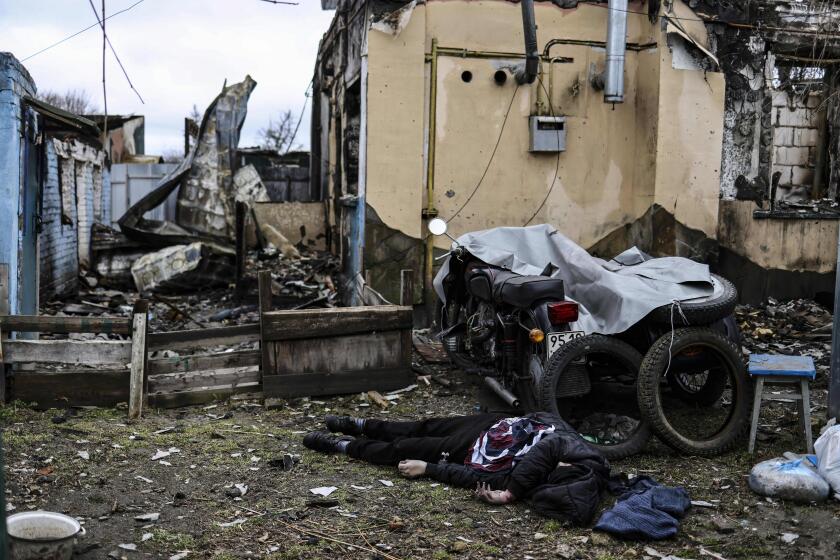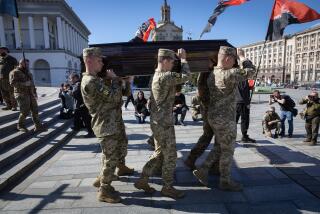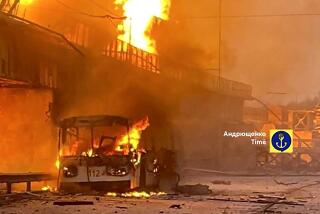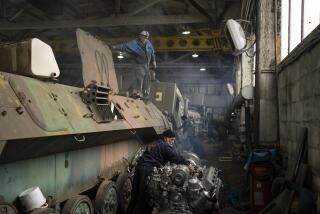U.S. official says its intelligence helped Ukraine sink Russian warship
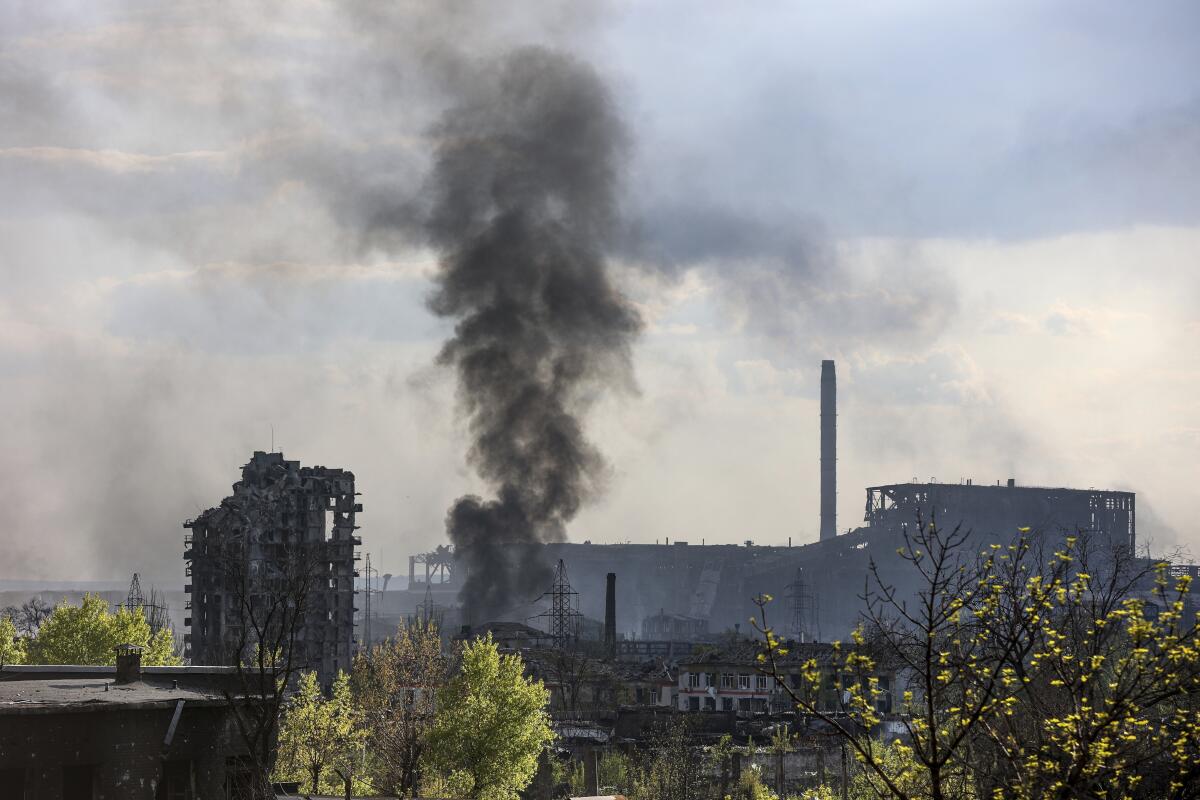
- Share via
KYIV, Ukraine — As Russian troops struck across eastern Ukraine on Thursday and mounted a new push to kill or capture the last remaining Ukrainian fighters defending the besieged port city of Mariupol, new evidence emerged that the U.S. provided intelligence that helped Ukraine sink a formidable Russian warship last month.
An American official told multiple major news outlets, including the Associated Press, that the U.S. has provided “a range of intelligence” to Ukraine, including the location of Russian ships on the Black Sea. The official said Ukraine decided on its own to use that information to target the Moskva, the missile cruiser whose sinking was a strategic and symbolic defeat for Russia.
The Biden administration has increased intelligence-sharing with Ukraine and has ratcheted up its shipments of arms to the war-torn nation, which was invaded by Russia on Feb. 24. The stepped-up involvement comes as Russia seems intent on seizing control — and possibly annexing — large stretches of eastern Ukraine.
Analysts say the Kremlin is eager to proclaim victory in Mariupol, in the southeast, before Monday, when Russia commemorates its role in defeating Nazi Germany during World War II.
Russian soldiers are battling the last Ukrainian holdouts in Mariupol, a group of several hundred fighters holed up at the Azovstal steel plant, which is also housing hundreds of civilians.
Ukrainian President Volodymyr Zelensky on Thursday pleaded for a cease-fire to allow the evacuation of civilians who remain trapped beneath the plant in a sprawling complex of subterranean bunkers and tunnels. In an address to the nation, Zelensky said time was still needed “to lift people out of those basements.”
“In the present conditions, we cannot use heavy equipment to clear the rubble away. It all has to be done by hand,” said Zelensky, who also asked for more help from the United Nations, which has joined with the International Committee of the Red Cross to usher civilians to safety from the plant. He said 344 people had been evacuated from Mariupol on Wednesday and taken to Zaporizhzhia, about 120 miles northwest.
Ukrainian officials said the situation has become more dire because Russian soldiers had penetrated the plant’s grounds. The Kremlin has denied that its troops have breached the complex.

Meanwhile, fighting raged in the east along a crescent-shaped, 300-mile-long front line in the Donbas, a region that encompasses the Luhansk and Donetsk provinces.
The Russian military said its air force struck dozens of Ukrainian military targets, including multiple concentrations of Ukrainian troops and an ammunition depot near the city of Luhansk. It said it had killed 600 Ukrainian fighters, a claim that could not be independently verified.
Posting on the messaging app Telegram, Luhansk Gov. Serhiy Haidai said Russian missiles hit homes, killing five people and injuring 25.
Weeks after Russian occupation, rural areas outside Ukraine’s capital still yield forest graves. Exhumations remain a near-daily task for police.
Even as Russia continued its air assault, Kyiv said its forces had regained control of “several settlements” between two key southern districts, Kherson and Mykolaiv. Kherson was the first major city to fall to the Russians and remains in their hands. The Ukrainian-held city of Mykolaiv, near the Black Sea, has been a bulwark against Russian forces moving toward the principal seaport of Odesa.
Ukraine’s military said it had also retaken Staryi Saltiv, about 26 miles northeast of Kharkiv, the nation’s second-largest city, which lies near the northeastern border with Russia.
Still, analysts feared that Ukraine was poised to lose Mariupol, a strategic prize that would allow Moscow to stitch together a land corridor connecting Russia, Crimea and areas farther west. The once-thriving city of about 430,000 people has lost more than three-quarters of its population. It has been the site of some of the war’s biggest tragedies and the subject of some of its most forceful negotiations.
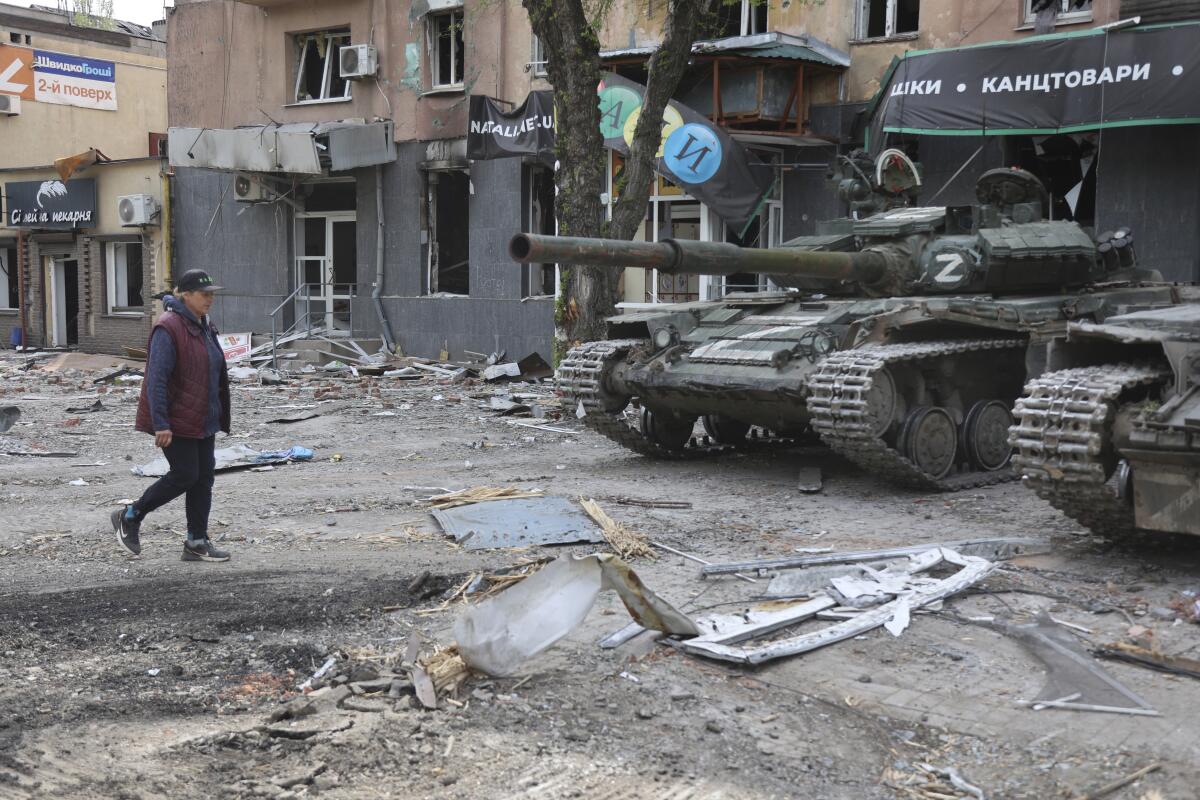
Moscow said that for three days beginning Thursday it would open a humanitarian corridor for civilian evacuations from the besieged steel plant. Russia appears eager to proclaim victory in Mariupol before Monday, when President Vladimir Putin is expected to participate in the major Victory Day ceremony commemorating the Soviet role in World War II.
Speaking to reporters Thursday, Kremlin spokesman Dmitry Peskov said Western reports of Russia using the holiday to launch increased attacks and strengthen its troop presence in Ukraine were “nonsense.” Before the war began, he had described U.S. warnings of a Russian invasion of Ukraine as false “hysteria.”
A video of Oksana Balandina, who lost both legs to a land mine, and Viktor Vasyliv dancing at their hospital wedding has lifted spirits in Ukraine.
Bedraggled civilians who have made their way from the Mariupol steelworks to Ukrainian-held territory in recent days have recounted a terrifying ordeal punctuated by heavy bombardment, with food, water and medical care almost impossible to obtain.
Ukrainian officials said a bloody battle for the plant was continuing. The plant sits above a vast multistory tangle of tunnels and below-ground bunkers dating to the Soviet era.
A Mariupol mayoral aide, Petro Andryushchenko, described “nonstop shelling and assault, even at night with the adjustment of fire from drones. In some areas, hostilities are already beyond the fence of the plant.” He said that “the last 11 square kilometers of freedom” in Mariupol — about four square miles, the area covered by the plant on the Sea of Azov — had been turned into “hell.”
Ukrainian authorities Thursday reported 629 child casualties — including 221 deaths — in fighting to date, warning that the tally was low because full information is unavailable from Russian-held areas. Altogether, official military and civilian casualty numbers for both nations have exceeded 15,000.
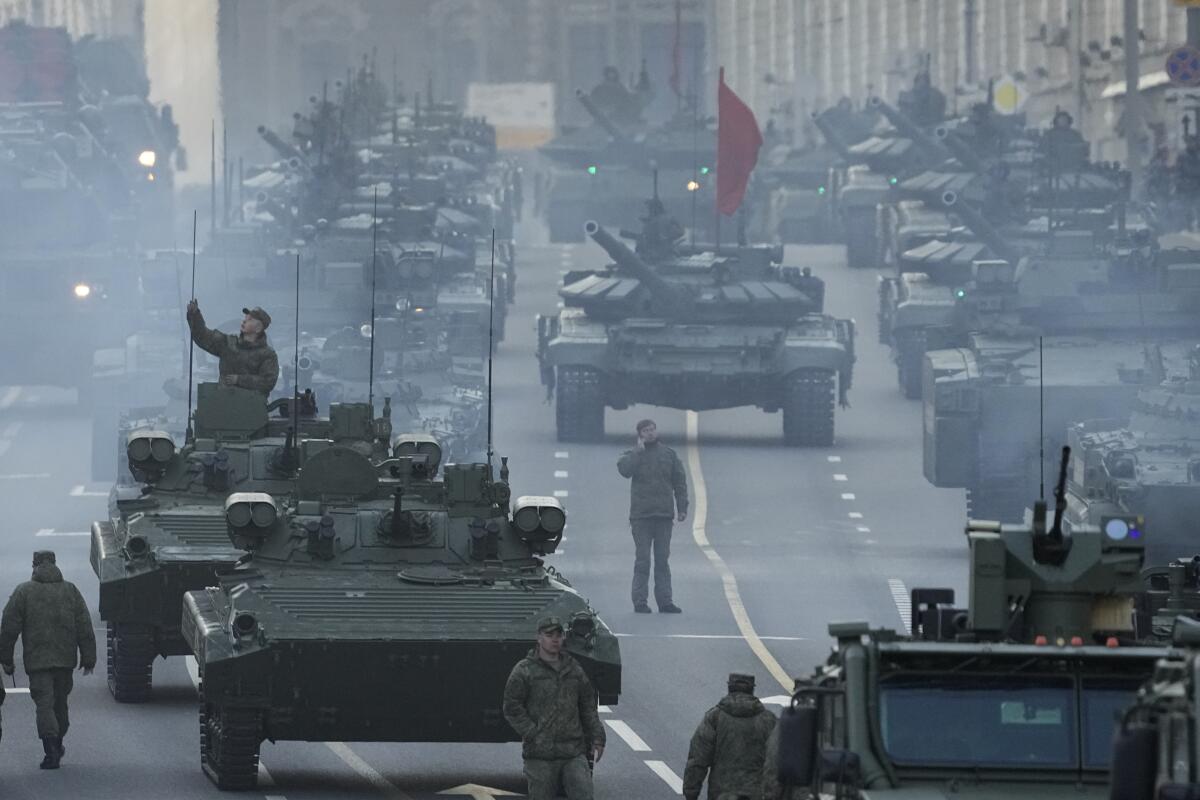
In its daily analysis Thursday, the British Defense Ministry suggested that new military exercises announced by Russian ally Belarus would be used “to fix Ukrainian forces in the north, preventing them from being committed to the battle for the Donbas.” The ministry said it did not expect Belarus, whose territory Russia used to stage its invasion, to join in fighting.
With Western officials and leaders in Ukraine and Russia signaling the war could drag on for months, international sanctions against Moscow have increased each week, largely focused on oligarchs, banks and the energy industry.
The European Union’s chief executive said Wednesday that the bloc should ban Russian oil imports, a proposal that would require unanimous approval from the union’s 27 member nations. The ban would take months to implement and would probably include exemptions for Hungary and Slovakia. A similar move against Russian natural gas imports is also on the table.
EU officials met Thursday to discuss the proposed oil ban. A deal could be finalized this week.
King reported from Kyiv, Kaleem from London and Linthicum from Mexico City.
More to Read
Sign up for Essential California
The most important California stories and recommendations in your inbox every morning.
You may occasionally receive promotional content from the Los Angeles Times.
